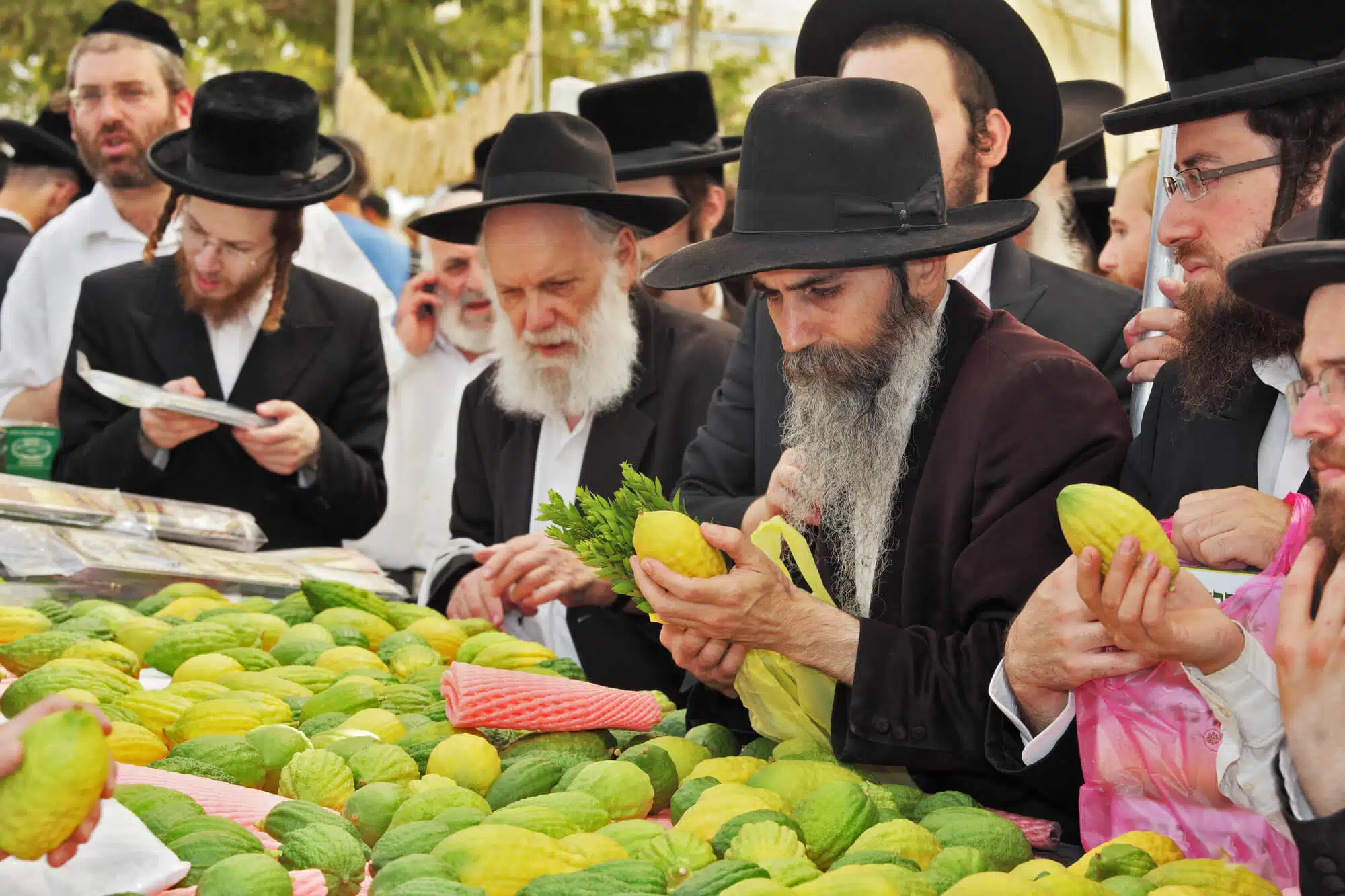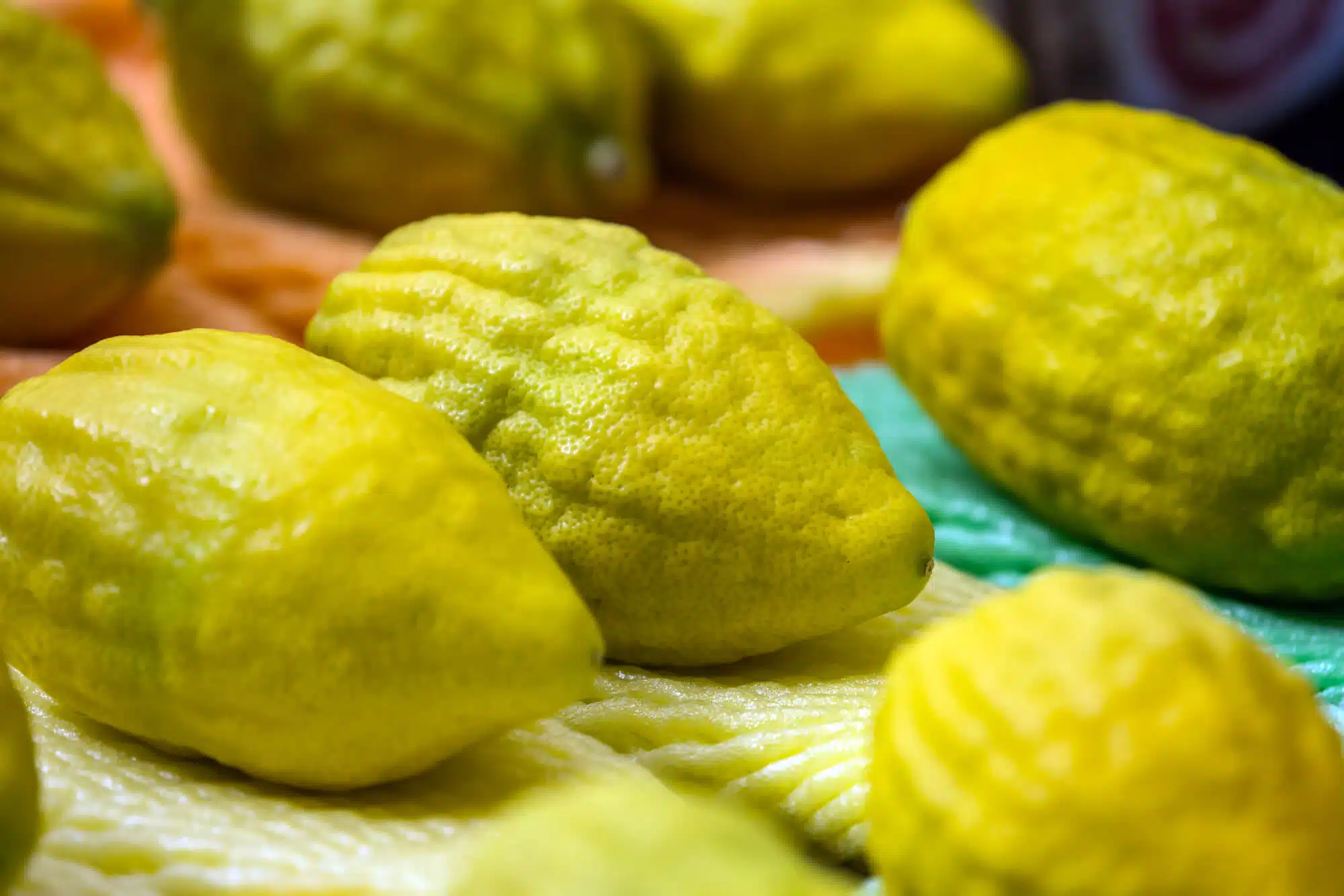The etrog is currently at risk due to the rise in global temperatures as part of the climate crisis, and it is possible that the day will come when we will no longer be able to grow etrogs in Israel - for the first time in 2,500 years
By Reot Alon, Zivata - Science and Environment News Agency

As a child, I joined my mother to visit the market of the Four Species. I remember very well the hustle and bustle that buzzed around the etrog tables: in the market island they examined the fruits by grammar, smelled them and weighed their weight in their hands. At one point, one of the sellers brought out an ornate silver box containing a blue velvet pillow, on which rested his most exquisite and expensive etrog. We settled on a "simple" recipe that I liked, and at the end of the holiday it turned into a delicious jam with cinnamon and cloves, which my mother makes to this day.
However, the rise in global temperatures is currently endangering the etrogs. And as the temperatures in the country continue to rise, the chances also increase that it will not be possible to grow it in Israel.
The scope of etrog cultivation in Israel stands at כ-2,500 one acre, and all of it is intended for the four species market. The import of etrogs to Israel began for the first time In 2008, then thousands of etrogs were brought to the country from Italy. This is at the same time that attempts are made every year to smuggle etrogs to Israel from abroad. With the increase in demand for hybrids from special species, the Ministry of Agriculture The permit started in 2013 to import Etrogs also from Morocco, trend which continued is also ב-2022 Due to the year of Shemita (in which according to Judaism the land cannot be cultivated).
among the local farmers Exists fear from increasing the import of etrogs from the North African country due The reform of the Ministry of Finance for customs relief on the import of fruits and vegetables. Yet, jelly the heat Those who have increased in recent years could pose a danger to the entire industry in the future.
A brief history of citrus fruits
The commandment of taking the four species is mentioned in Leviticus 2,500 - where they are described as "citrus fruit", "palms of dates" (lolav), "thick tree branch" (myrtle) and "river thorn" (araba). "We don't know what the 'fruit of the citrus tree' is that appears in sources from the First Temple (the period to which the Book of Leviticus mostly dates, RA) - this is in contrast to the other three species, which we know exactly what they are," says Dr. Nir Karmi, the researcher in charge On the development of citrus varieties at the Volcani Institute. According to him, the etrog arrived in Israel only later, about XNUMX years ago, with the captivity of Zion, and in the days of the Second Temple it is mentioned under the name "fruit of Babylon": it is true that it originated in India in general, but from there it came to Persia, which conquered Babylon - and came to Israel with the Babylonian exiles . Since then, the bitter and almost juiceless fruit has taken its place as part of the ritual of the holiday of Asif, and won a place of honor among the four species as well: the price of a particularly fancy etrog can reach Even for 500 shekels.
The future fate of the Ethrog goes hand in hand with the fate of the other Hadar. The citrus fruits that we know today, such as the lemon and the orange, are actually a natural or artificial hybrid between four the ancestors the ancients of the varieties of citrus trees: the etrog (or by its scientific name Citrus medica), the mandarin (Citrus reticulata), the pomelo (citrus maxima, which is called by many "pomela") and papada (Citrus mirantha, a fruit whose appearance is similar to that of a medium lemon and whose skin is similar to the skin of the etrog).

These fruits found their way to Israel long after the Etrog. "The common citrus fruits that we know today arrived in the Mediterranean basin and in Israel with the Portuguese about 500 years ago, during the period of the discovery of the lands," Carmi explains. "After the conquest of Constantinople by the Ottomans in the 15th century, the perfume route, which was the trade route between Europe and the East, was closed - it was necessary to find another trade route, and thus the maritime route was opened." According to him, in those days many of those who sailed at sea fell ill with scurvy - a serious disease caused by a lack of vitamin C. "The Portuguese who sailed to Africa realized that there was something in citrus fruits - because those who ate them recovered from the disease, and with this understanding they began to distribute the fruits through the trade routes."
Heat and citrus
Today, the citrus fruits that have become an integral part of our menu, including the etrog, may be in danger. as per Researchers From Spain, the increase in global temperature as a result of the climate crisis changes the environmental conditions and leads to extreme events such as floods, heat waves and droughts - which harm the citrus crops and endanger the survival of the plant.
The Spanish study found that the optimal temperature range for growing citrus trees is between 22-34 degrees Celsius - but during heat waves the temperature may be much higher. Thus, in Morocco, from which we import many etrogs as mentioned, last August no less than50 degrees Celsius. Only by luck, the heat wave did not damage the citrus crops due to its timing. "Citrus blossoms occur in the spring season, in the summer they grow and their skin is green and in the winter their ripening occurs and their skin becomes orange or yellow," says Karmi. "If there is a heat wave during flowering, it can cause the flowers to fall, so if the temperatures continue to rise and the heat waves precede spring - there will be a serious danger."
In addition, in places that are warming at a higher rate - such as the Middle East - increased pumping of water from aquifers (underground water reservoirs) due to drought causes a large intrusion of sea water into them. Citrus trees are a crop that requires a lot of watering - and when you irrigate them with the more saline water, this leads to an increase in the salts in the soil, which affects the yield of the trees.
High temperatures and lack of water also cause an increase in the acidity level of the fruits. In addition, they also have effect About reproduction and the increase של fruits the citrus: They delay the fertilization of the eggs in the plant and lead to the dropping of the mummified fruit ("baby" fruit) - which subsequently causes a decrease in the amount of fruit.
Another problem, which farmers have to deal with already, is that the severe heat waves in the summer affect the color of the fruits - which makes it difficult to sell them. "The breaking of the citrus color from green to orange or yellow depends on the temperature and requires cold doses," explains Karmi. "For us, the heat waves caused the fruit to ripen earlier and arrive when it is still green on the outside, so there is no synchronization between the internal ripening and the external color - something that can affect the ability to sell the fruit." According to Karmi, this gap can be solved with the help of ethylene gas, which accelerates the change in skin color - but this is a treatment that does not work well with all citrus varieties and requires time and financial investment, so it is not necessarily the optimal solution.
In addition to all this, in recent decades there has been a clear trend in Israel of Abandonment of citrus crops Due to lack of economic viability, and switching to other crops (like avocado). This coincides with the general decrease in the number of farmers and the scope of Israeli agriculture.
biting nails
And what will happen with the etrogs? According to Karmi, this is a crop that is very sensitive to diseases, so it is generally difficult to grow it. If you add to this the increase in temperatures, according to Karmi, it will probably be impossible to grow the fruit in Israel in the future. Instead, his crops will move to more northern countries (a process that is already starting to take place - for example with Login Tumors The citrus fruits to the state of Georgia in the United States, where in the past it was too cold to grow them). "The problems that exist at the moment are relatively minor and do not pose an existential threat to the fruit, but we are biting our nails, because if the warming worsens and the heat waves precede the flowering time, there will be a real danger - and this could end the industry in the country."
Today it is required act Active To curb the climate crisis (by switching to low-carbon energies such as solar energy, reducing the consumption of animal food and reducing carbon emissions), and at the same time find agronomic solutions such as carrying out © genetic in the plant which will allow citrus fruits to be more resistant to heat and lack of water. Otherwise, the fruit so associated with Sukkot may be much rarer than we are used to.
More of the topic in Hayadan:
